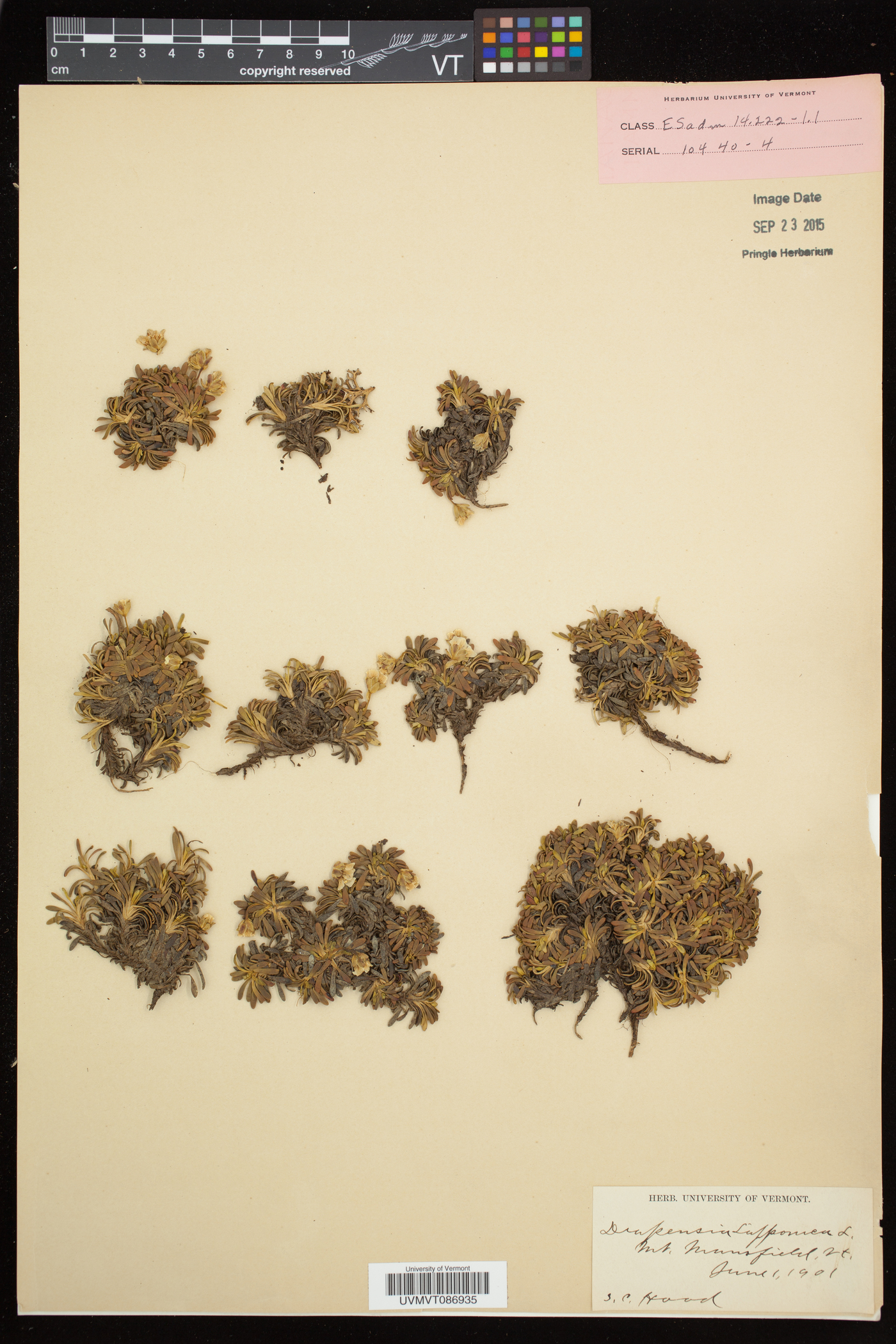Diapensia
|
Family: Diapensiaceae |
Subshrubs, forming tussocks, cushions, domes, or mats, caulescent, taprooted. Stems mostly prostrate to decumbent, branched; branches procumbent or decumbent to erect. Leaves cauline, mostly opposite or compactly whorled, densely imbricate or crowded, 3-15 mm; petiole present or absent; blade oblong-lanceolate to narrowly spatulate, obovate, or spatulate-elliptic, slightly falcate, margins entire, apex acute or obtuse, surfaces glabrous, appearing 1-veined, sometimes with 1-2, indistinct, lateral veins. Inflorescences solitary flowers, pedicellate to subsessile, immediately subtended by 2-3 bracts. Pedicels ebracteate, elongating after anthesis. Flowers: sepals distinct or connate proximally; petals connate in proximal 1/2, corolla cupulate to campanulate, 7-10 mm, lobes white to cream or pinkish tinged to rose, margins entire; anthers 2-locular, without basal spurs, longitudinally dehiscent; filaments adnate to corolla tube; staminodes absent or vestigial. x = 6. The three temperate species of Diapensia are endemic to the Sino-Himalayan Mountains. They differ as a group from the two boreal species by their production of vestigial staminodes (see F. Ludlow 1976).
Cal deeply 5-parted; cor campanulate, the 5 lobes broadly obovate, about equaling the tube; stamens 5, adnate to the cor to the sinuses; filaments broad and flat; pollen-sacs 2, transversely divergent, opening by longitudinal slits; style slender, elongate; stigma truncate; fr subglobose; dwarf, branched and matted, evergreen subshrubs with mostly opposite lvs; fls white, each closely subtended by 3 bracts, solitary on a terminal peduncle. 4, the others Asian. Gleason, Henry A. & Cronquist, Arthur J. 1991. Manual of vascular plants of northeastern United States and adjacent Canada. lxxv + 910 pp. ©The New York Botanical Garden. All rights reserved. Used by permission. |

